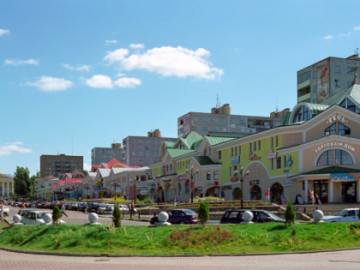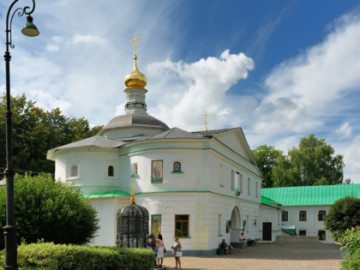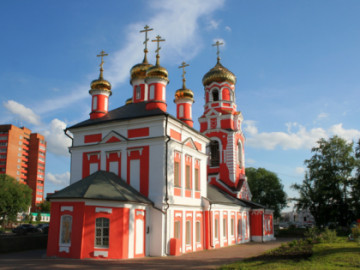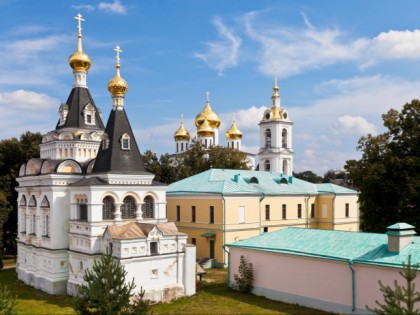Museum-Reserve Dmitrov Kremlin is the same age as the city
The history of Dmitrov began from the Dmitrov Kremlin. In 1154 the founder of Moscow Prince Yuri Dolgoruky built an ancient Slavic settlement fortress on the site and named it in honor of his son Dmitry. The fortress was destroyed seven times. Today the Dmitrov Kremlin consists of the remains of fortifications, the Cathedral of the Assumption and several buildings of the 19th and 20th centuries that are part of its ensemble.
The Dmitrov Kremlin has a hard fate. For the first time it was burned by the Kiev prince Sviatoslav in the 12th century, then by the Tatar-Mongols, and in 1610 when Rus was at war against Poland and the crisis of statehood was developing. The Kremlin was also fired by the warriors of the Grand Duchy of Lithuania, and has not been restored since then.Today as part of the Dmitrov Kremlin there is a survived part of the fortress wall nearly one kilometer long and 7 to 9 meters high, created in the 12th-13th centuries. The territory, which used to be occupied by the Kremlin, has a museum-reserve of 12 buildings. The exposition covers different epochs and aspects of the history of the city. Here one can look at paintings, icon paintings, graphics, collections of porcelain, furniture, books and documents, weapons and other artifacts. The famous revolutionary and anarchist Peter Kropotkin took part in the creation of the museum. The exposition, arranged in the house where he spent the last years of his life, is devoted to him.Another part of the museum, the Cathedral of the Assumption, was built in the early 16th century with the participation of Italian craftsmen. The white-stone temple was originally erected as a five-domed church, and after the reconstruction in the XIX century it acquired four more domes at the corners, which gives the composition the appearance of a pyramid. Elements of the original exterior decoration of the church have been preserved: three tiled bas-reliefs depicting two crucifixions and St. George the Victorious. The ancient shrines of the temple were also survived: the icon of the XII century, the carved iconostasis of the XVIII century and the tent episcopal place decorated with carvings.
GPS coordinates
56.344313, 37.520563
Phone
+7 495 9937413
Official website
Opening Hours
Now - closed
Wed-Sun
09:00-17:00
Nearby

Zagorskaya Street
Other places

Granatovyj Sad
Restaurant
+7 967 2401505
Payment methods:

Fyuzhn-Ekspress
Café
+7 926 1846868
Payment methods:

Ivan-Chaj
Restaurant • Catering
+7 965 1408811
Payment methods:

Church of the Our Lady of Kazan
Architectural Monuments • Temples and places of worship • Cathedrals and churches • Other places

Terrasa
Restaurant
+7 925 5158050
Payment methods:

WokPanda
Café
+7 985 1887880
Payment methods:

Sushi Dmitrov
Sushi bar
+7 916 5011177
Payment methods:

Maska
Restaurant

Parter
Restaurant • Hotel
+7 495 6444121
Payment methods:

Piu Del Cibo Cafe
Café • Pizzeria
+7 977 2818101
Payment methods:

Boris and Gleb Monastery
Architectural Monuments • Temples and places of worship • Abbeys and Monasteries • Other places

Yakitoriya
Sushi bar
+7 499 7559403
Payment methods:

Shakhnura
Restaurant • Banquet room • Bar • Café
+7 963 9624343

Lago Verde Club
Restaurant • Karaoke • Hotel
+7 905 7934101
Payment methods:

Kofe-Tajm
Coffee shop
+7 926 5352515
Payment methods:

Karavai
Restaurant • Banquet room • Café
+7 968 6662939
Payment methods:

Pelmesto
Restaurant
+7 496 2230900
Payment methods:

D'Miro
Pizzeria
+7 496 2254707
Payment methods:

TalismaN
Restaurant • Banquet room
+7 968 5423635
Payment methods:

21 Vek
Restaurant
+7 4962 274431
Payment methods:

The Church of the Presentation of the Lord
Temples and places of worship • Cathedrals and churches • Other places

Karamel
Restaurant • Banquet room
+7 925 1120899
Payment methods:

Ilinskie Xolmy
Restaurant • Catering
+7 985 2534479
Payment methods:

Forest-lounge
Restaurant • Night Club • Bar • Hookah bar
+7 926 9878255
Payment methods:

Kruiz klub
Restaurant
+7 969 1234000
Payment methods:




